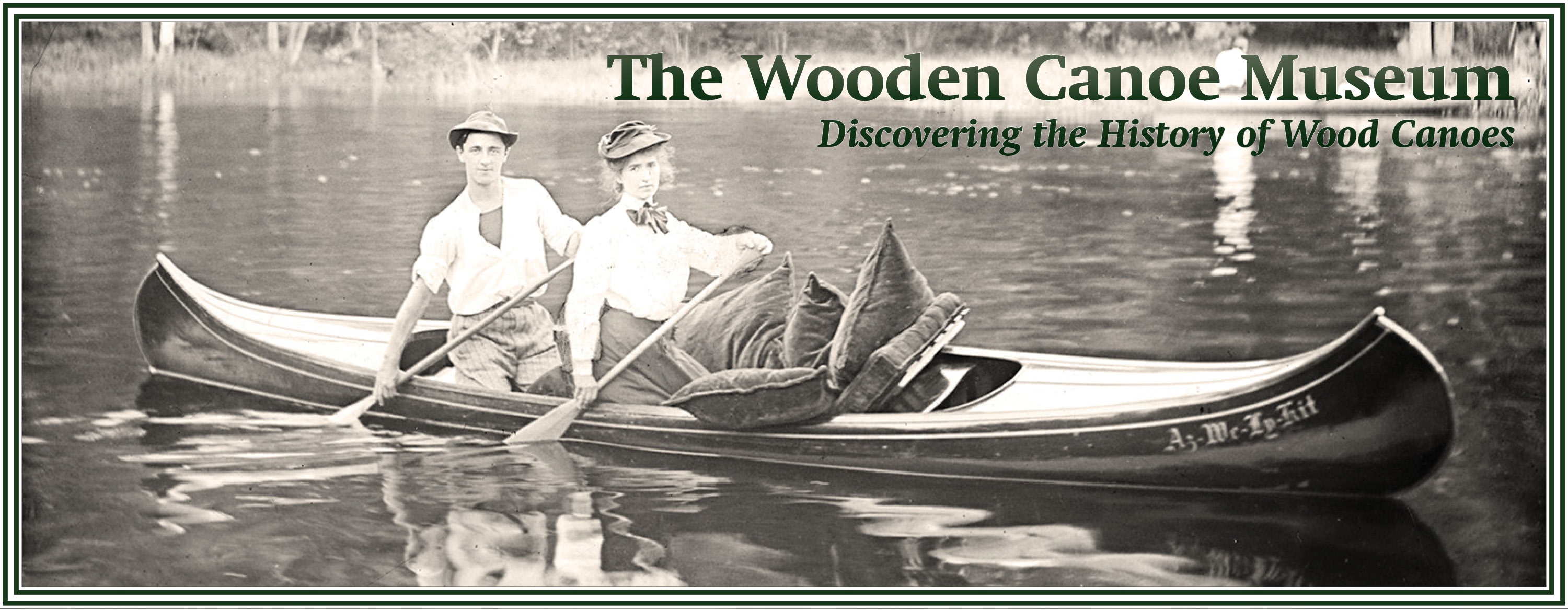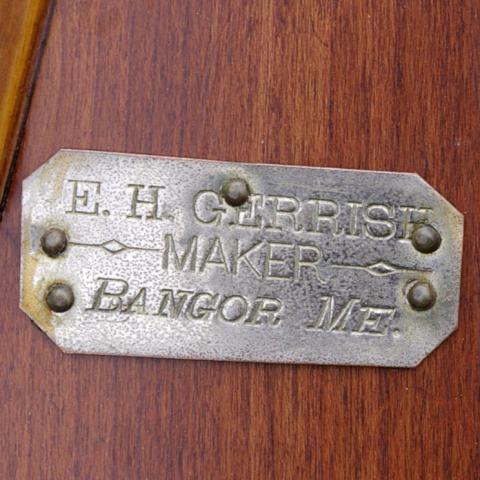Evan H. Gerrish may have been the first person to sell wood and canvas canoes commercially. From 1882-1909, he built and sold canoes from a shop in Bangor, Maine. Some of his canoes contain elements of the birch bark canoes upon which they were based. If studied from earliest-to-latest, Gerrish canoes appear to show the morphing of the wood-canvas from its roots in the birch bark to the modern open gunwale canoe.
In 1909 Gerrish sold the company to his foreman, Herbert Walton. Walton moved the company to his hometown of Costigan Me. Walton continued to use the Gerrish name on his canoes but change the name tag to reflect the new location of Costigan. Production of the canoes slowly declined until the shop finally closed around 1930.
Name Plate: metal plate affixed to bow deck stating E.H. Gerrish/Maker/Bangor ME
(Also seen is the above wording stenciled on the canoe's planking)

